Dilip Kumar Margam
MuRIL: Multilingual Representations for Indian Languages
Apr 02, 2021

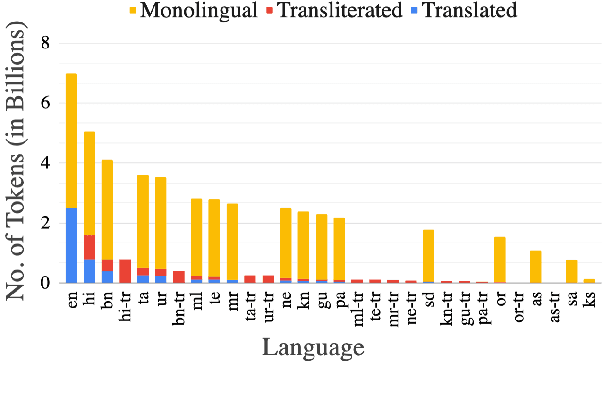

Abstract:India is a multilingual society with 1369 rationalized languages and dialects being spoken across the country (INDIA, 2011). Of these, the 22 scheduled languages have a staggering total of 1.17 billion speakers and 121 languages have more than 10,000 speakers (INDIA, 2011). India also has the second largest (and an ever growing) digital footprint (Statista, 2020). Despite this, today's state-of-the-art multilingual systems perform suboptimally on Indian (IN) languages. This can be explained by the fact that multilingual language models (LMs) are often trained on 100+ languages together, leading to a small representation of IN languages in their vocabulary and training data. Multilingual LMs are substantially less effective in resource-lean scenarios (Wu and Dredze, 2020; Lauscher et al., 2020), as limited data doesn't help capture the various nuances of a language. One also commonly observes IN language text transliterated to Latin or code-mixed with English, especially in informal settings (for example, on social media platforms) (Rijhwani et al., 2017). This phenomenon is not adequately handled by current state-of-the-art multilingual LMs. To address the aforementioned gaps, we propose MuRIL, a multilingual LM specifically built for IN languages. MuRIL is trained on significantly large amounts of IN text corpora only. We explicitly augment monolingual text corpora with both translated and transliterated document pairs, that serve as supervised cross-lingual signals in training. MuRIL significantly outperforms multilingual BERT (mBERT) on all tasks in the challenging cross-lingual XTREME benchmark (Hu et al., 2020). We also present results on transliterated (native to Latin script) test sets of the chosen datasets and demonstrate the efficacy of MuRIL in handling transliterated data.
Audio-Visual Decision Fusion for WFST-based and seq2seq Models
Jan 29, 2020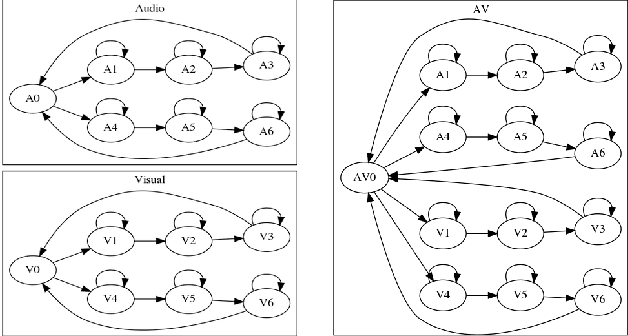
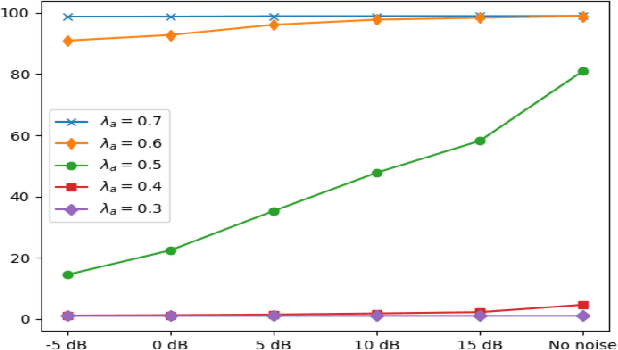
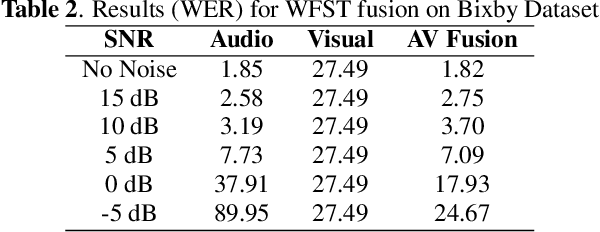
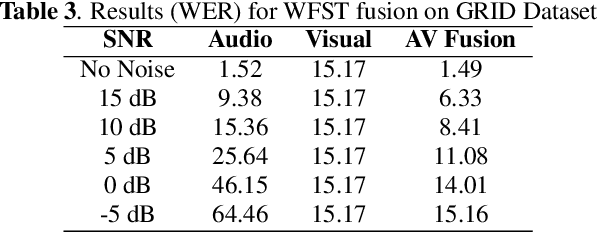
Abstract:Under noisy conditions, speech recognition systems suffer from high Word Error Rates (WER). In such cases, information from the visual modality comprising the speaker lip movements can help improve the performance. In this work, we propose novel methods to fuse information from audio and visual modalities at inference time. This enables us to train the acoustic and visual models independently. First, we train separate RNN-HMM based acoustic and visual models. A common WFST generated by taking a special union of the HMM components is used for decoding using a modified Viterbi algorithm. Second, we train separate seq2seq acoustic and visual models. The decoding step is performed simultaneously for both modalities using shallow fusion while maintaining a common hypothesis beam. We also present results for a novel seq2seq fusion without the weighing parameter. We present results at varying SNR and show that our methods give significant improvements over acoustic-only WER.
LipReading with 3D-2D-CNN BLSTM-HMM and word-CTC models
Jun 25, 2019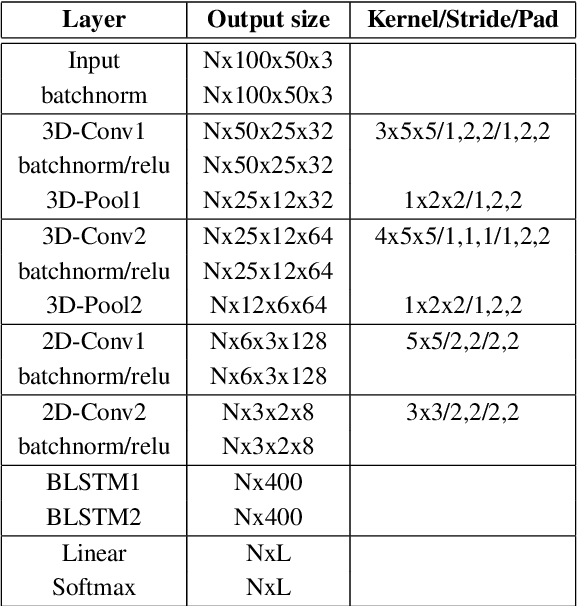


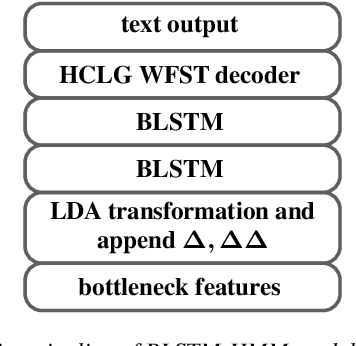
Abstract:In recent years, deep learning based machine lipreading has gained prominence. To this end, several architectures such as LipNet, LCANet and others have been proposed which perform extremely well compared to traditional lipreading DNN-HMM hybrid systems trained on DCT features. In this work, we propose a simpler architecture of 3D-2D-CNN-BLSTM network with a bottleneck layer. We also present analysis of two different approaches for lipreading on this architecture. In the first approach, 3D-2D-CNN-BLSTM network is trained with CTC loss on characters (ch-CTC). Then BLSTM-HMM model is trained on bottleneck lip features (extracted from 3D-2D-CNN-BLSTM ch-CTC network) in a traditional ASR training pipeline. In the second approach, same 3D-2D-CNN-BLSTM network is trained with CTC loss on word labels (w-CTC). The first approach shows that bottleneck features perform better compared to DCT features. Using the second approach on Grid corpus' seen speaker test set, we report $1.3\%$ WER - a $55\%$ improvement relative to LCANet. On unseen speaker test set we report $8.6\%$ WER which is $24.5\%$ improvement relative to LipNet. We also verify the method on a second dataset of $81$ speakers which we collected. Finally, we also discuss the effect of feature duplication on BLSTM-HMM model performance.
 Add to Chrome
Add to Chrome Add to Firefox
Add to Firefox Add to Edge
Add to Edge